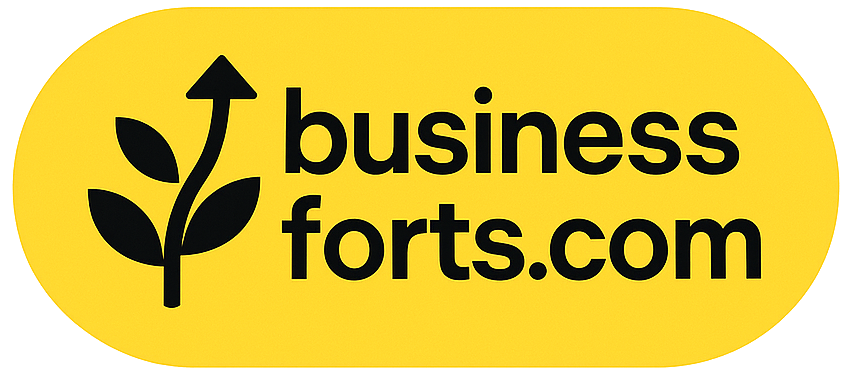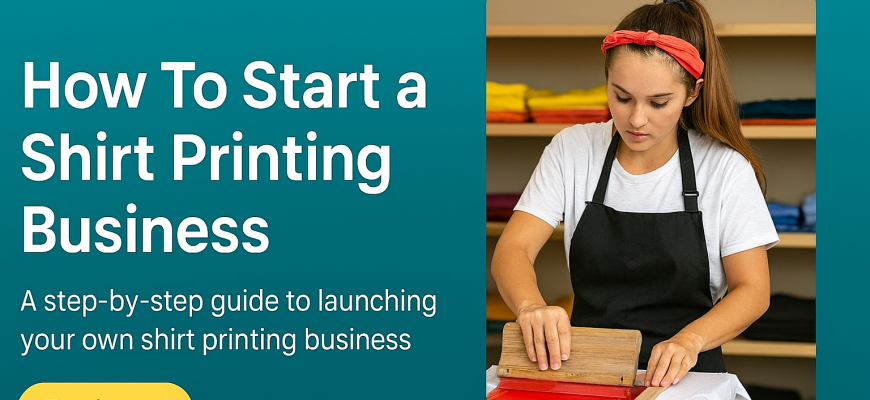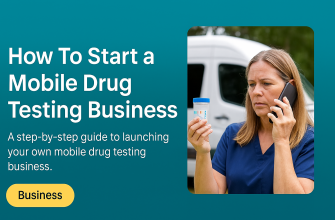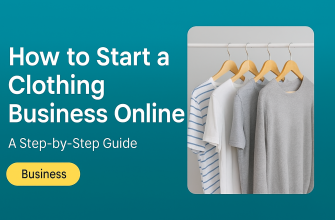Every year more women are launching creative ventures, and custom shirt printing is a booming field. The global market for custom-printed apparel was about $5.16 billion in 2024 and is projected to nearly double by 2030 (CAGR ~11.5%). Fashion is shifting toward personalized clothing, as people prefer wearing designs that reflect their passions and identity. A shirt business lets you tap into this demand. It’s a low-cost, high-creativity opportunity: you can start from home with minimal inventory, design graphics that speak to your audience, and grow at your own pace. With online tools and print-on-demand services, it’s easier than ever to launch – and as a woman entrepreneur, you can use your unique perspective to stand out.
Online vs Brick-and-Mortar: Choosing Your Model
A key decision is whether to sell online or open a physical store (or both). Online stores have huge advantages: you reach customers anywhere and avoid costly rent or utilities. A well-built website or platform (Shopify, Etsy, etc.) can be open 24/7 and serve a global market. For example, Etsy alone has over 96 million active buyers browsing for unique apparel. That means your shirts can find fans across the world. The overhead is low – you won’t be paying for shop rent, and many processes (payment, marketing) can be automated or done from home. The downside is competition and the challenge of standing out online. You’ll need to invest in good product photography and digital marketing. You’ll also manage shipping logistics and returns, since customers can’t physically try on your shirts before buying.
A brick-and-mortar store or pop-up kiosk offers other benefits. Shoppers love touching and trying on clothes, and you can close a sale instantly when they visit. A physical store caters to impulse sales: a window browser can step inside, see your newest design in person, and walk out wearing it. There’s no waiting for delivery – customers pay and take their shirt home immediately. Face-to-face service builds trust and loyalty; satisfied customers often return and refer friends. On the flip side, a physical location means higher startup costs. You’ll incur rent, utilities, fixtures and staff costs that online businesses avoid. Managing inventory and store upkeep also takes time and money. In practice, many entrepreneurs combine both models (e.g. a home studio plus an online shop, or an Etsy store plus local pop-up events) to get the best of both worlds.
Printing Methods: Screen, DTG, and Heat Transfer
Not all printing techniques are alike. Choosing the right method depends on your volume, design complexity, and budget. Screen printing is one of the oldest methods. It uses stencils to apply ink through mesh screens, yielding vibrant, durable prints. Screen printing can produce very long-lasting designs – you’ll feel the ink on the fabric and it won’t wash out easily. However, it’s most cost-effective for large batches. Each color requires a separate screen, so setting up is labor-intensive. For a small order or a complex multicolor design, screen printing may be pricey (and it usually requires a minimum run of a dozen shirts or more).
Heat transfer printing (including vinyl or transfer paper) is more flexible for small runs. You can design full-color graphics on a computer, print them onto special heat-transfer paper or vinyl, and then use a heat press (or even an iron) to apply them to shirts. This lets you easily produce photorealistic images and detailed designs on demand. It’s affordable for prototypes or custom orders because you don’t need big screens or expensive presses upfront. For example, you could run an iron-on vinyl cutter and a basic heat press at home (totaling a few hundred dollars) to press out your first shirts. The trade-off is that homemade heat transfers can be less durable and have a stiffer feel than screen prints. They also require additional steps (like mirroring the image, weeding excess vinyl, etc.).
Direct-to-garment (DTG) printing is like a giant inkjet printer for shirts. The shirt is loaded into a machine and the printer head sprays water-based inks directly onto the fabric. This method excels at full-color, photo-quality designs and requires almost no setup – no screens or plates at all. That makes DTG ideal if you want to offer many different designs in small quantities (for example, printing one or two shirts at a time). The print quality rivals screen printing and it works well on light-colored, tightly woven shirts. The downside is speed and cost per shirt: DTG printers are expensive (often $5,000–$18,000) and each shirt is printed individually, so it doesn’t benefit from bulk pricing. Also, DTG inks can fade faster unless properly cured.
Finally, consider print-on-demand (POD) services. With POD (e.g. Printful, Printify, etc.), you don’t buy any equipment or inventory. You simply upload your designs to an online platform, and when a customer orders, the POD partner prints and ships the shirt for you. This is a very low-risk way to test the market or run a side hustle. The trade-off is higher per-shirt cost and less control over quality. Still, print-on-demand is great if you want to start immediately and minimize overhead.
Finding Your Niche and Designing Shirts
To stand out, choose a niche you love and understand. The most successful shirt lines focus on a specific theme or audience – for example, dog owners, yoga fans, gamers, entrepreneurs, or anyone with a shared passion. A narrow niche means you can speak directly to that group’s interests. For instance, “funny t-shirts for dog moms” or “motivational shirts for new moms” are more targeted (and easier to market to) than generic “funny t-shirts”. Think about your own networks: maybe you’re part of a book club, a fitness class, or an arts community. What shirts would you and your friends be excited to wear? Designing from your own interests often leads to authentic, eye-catching art.
Remember: customers buy custom shirts to express their identity. A slogan or graphic can tell a story about who they are or what they care about. When planning designs, focus on quality and consistency. Use the same color palette and style in a collection so people recognize your brand. If you’re not a graphic designer, there are many free or affordable tools (like Canva, Adobe Spark, or even hiring a freelancer) to help create professional-looking artwork. Always get feedback: mock up your shirt design and ask friends or social media followers which version they prefer. Good design is key – it’s what makes your shirts “pop” on the rack or screen.
Equipment, Tools, and Startup Costs
How much you spend depends on your chosen printing method and scale. A full DIY setup can range widely. For screen printing, a beginner press, a few squeegees, inks and drying equipment can total on the order of $1,200–$3,500. A DTG printer is pricier: expect $5,000–$18,000 for a good machine, plus a heat press (about $200–$800) and pretreatment supplies. A vinyl cutter and heat press (for heat-transfer vinyl) is the most budget-friendly – some starter bundles run only $600–$2,000 total. Don’t forget ancillary costs like blank shirts (consider wholesale suppliers for better margins), design software (often free or included), packaging, and a reliable computer.
On the other hand, you can minimize startup costs with print-on-demand or local printers. If you use a POD service integrated with Shopify or Etsy, you can begin with essentially zero upfront inventory. You’d only pay per shirt once you make a sale. Similarly, some digital printers offer bulk Fulfillment, where they charge nothing until you order a run of shirts. This “pay-as-you-go” model lets you test ideas without risk.
Tip: If you go the DIY route, look for used equipment on Craigslist or Facebook Marketplace. Many hobbyists upgrade their machines and sell the old ones cheaply. You can also start very small – for example, doing simple one- or two-color designs by hand – and scale up as you reinvest profits.
Where and How to Sell
The “where” of selling is up to you. Online, you have many channels: your own website (Shopify, WooCommerce, BigCommerce, etc.), or marketplaces like Etsy, Amazon, and eBay. Shopify’s own guide and platforms make it easy to launch a branded store. Marketplaces come with built-in traffic – for example, Etsy is known for custom apparel and already has millions of buyers searching. When you start online, make sure to take high-quality mock-up photos of your shirts (or order samples to photograph) and write clear, engaging product descriptions. Good SEO (using keywords your customers use) will help people find you. Also leverage social media shops: Facebook and Instagram let users browse and shop your products directly, and Pinterest is great for visual products like shirts.
Locally, consider in-person venues: craft fairs, farmers markets, pop-up shops, and art shows are perfect for shirts. Customers love to see and feel garments in real life. Team up with other artisans or local stores (for example, consignment in a boutique or co-hosting a holiday market). When you meet people face-to-face, word-of-mouth spreads fast. Carry extra business cards or flyers, and consider small swag (like stickers or keychains) that feature your logo to leave with customers. Local events also let you test new designs and get instant feedback.
For example, a common strategy is to have an online store for broad reach and supplement it with local pop-up events. You might post on social media that you’ll be at a weekend market with your newest designs – your followers (and potential press) will come see you. Keep an organized spreadsheet of orders, inventory, and expenses from day one. Whether online or offline, make checking out easy: offer multiple payment options (cash, credit, PayPal, etc.), clear return policies, and prompt customer support.
Marketing Tips for Women Entrepreneurs
Marketing is where your creativity and personal story shine. As a woman entrepreneur, you have a powerful perspective to share. Build trust with authentic, consistent communication. Use social media (Instagram and Facebook are especially visual and popular for apparel) to post more than just product pictures. Share behind-the-scenes glimpses of your design process, photos of you at work or with your family, and candid stories about why you started this business. Real testimonials from customers (photos of someone wearing your shirt) are gold for showing credibility. According to marketing experts, posting product photos and testimonials regularly helps build brand loyalty – it makes customers feel connected to your journey. Go “all in” on visibility: the more you show up (with useful content, answers to comments, or live Q&A sessions), the more your brand grows. As one expert advises: “When you increase your visibility… [you] not only grow your brand but also build credibility and expand your reach. It’s about engaging with your audience, sharing your expertise and building relationships”.
Don’t forget word-of-mouth and referrals, which thrive in communities. Make an effort to connect with other local business owners (especially women-run boutiques, gift shops, or complementary craftspeople) and build a support network. For example, a mom-and-pop shop might let you leave flyers or even feature your shirts on consignment. Encourage happy customers to spread the word: consider a simple referral discount or loyalty punch-card. Many women entrepreneurs find that treating customers like friends (engaging, celebrating their events, even joking with them) creates die-hard supporters. One baker we know chatted with her customers regularly and found they became her marketing – sharing honest reviews and new ideas that kept her products selling.
Other practical tactics: build an email list from day one. Send occasional newsletters with new design launches or sales. Use local SEO (like Google Business) so nearby customers find you. Partner with women’s groups, mom meetups, or online communities in your niche. Sponsor a local fundraiser or women’s event with your shirts – you’ll gain exposure and good PR. And always keep learning: read marketing blogs, experiment with small ads if you have budget (e.g. targeted Facebook ads), and track what works. Remember, as a creative business owner you truly are the differentiator – your personality, passion, and story are what customers connect with.
Final Thoughts and Encouragement
Launching a shirt printing business as a woman is both an exciting and empowering journey. You’ll meet challenges – from tight deadlines to design dilemmas – but you’re far from alone. In fact, women are setting up businesses in record numbers. In the U.S., the number of women-owned businesses jumped by 21% between 2014 and 2019. Today nearly 42% of all U.S. businesses are women-owned. Those figures show one thing clearly: women entrepreneurs are succeeding and leading in every industry. Your creativity and perspective are in demand.
Believe in yourself. You have unique ideas and talents that only you can bring to your business. Stay true to your vision and values. Build a supportive network (other women business owners are often eager to help each other). And take care of yourself along the way – start-up life can be overwhelming, so remember to rest and recharge. Every shirt you create is a step forward. Celebrate small wins (a great sale, a glowing review) and learn from setbacks.
Starting a shirt printing business is a journey of growth. It’s a creative adventure that lets you share passion through wearable art. With careful planning, smart marketing, and that unique spirit of a woman entrepreneur, you can turn this opportunity into a thriving business. Go for it – the world is ready for your designs, and we’re cheering you on as you make your mark!









